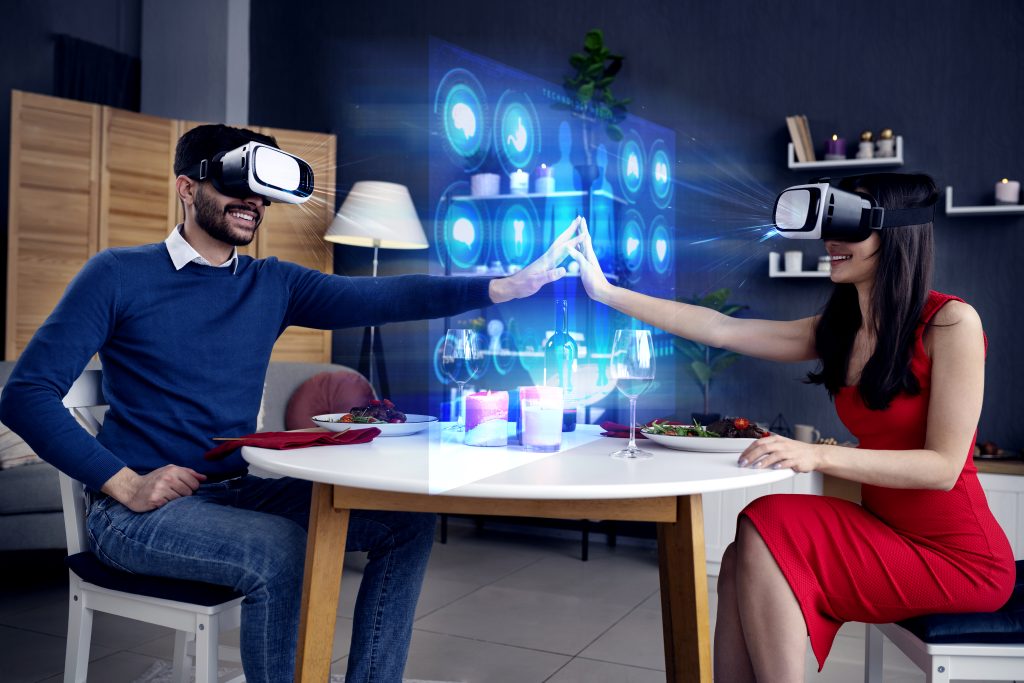In the ever-evolving landscape of web design, staying ahead of the curve is essential for creating memorable and immersive user experiences. One technology that has been making waves in recent years is Augmented Reality (AR). Traditionally associated with mobile applications and gaming, AR is now transcending its boundaries and finding a new home in web design. In this blog post, we’ll explore the impact of Augmented Reality in web design, its applications, and the exciting possibilities it brings to the table.
Understanding Augmented Reality in Web Design
At its core, Augmented Reality involves overlaying digital information onto the physical world, creating a blended experience for users. In web design, AR introduces a dynamic layer of interactivity, transforming static web pages into engaging and interactive environments. This evolution opens up a myriad of possibilities for businesses looking to elevate their online presence.
Applications of AR in Web Design
- Interactive Product Displays: AR enables businesses to showcase their products in a more engaging way. Imagine a furniture website where users can use their phone cameras to see how a piece of furniture would look in their own living room. This interactive and personalized experience enhances the user’s decision-making process.
- Virtual Try-Ons: The fashion industry is leveraging AR to allow users to virtually try on clothing and accessories. This not only enhances the online shopping experience but also reduces the likelihood of returns, as users can visually confirm how a product fits and looks on them.
- Navigation and Wayfinding: AR can enhance navigation on websites by providing interactive overlays that guide users through complex interfaces. This is particularly useful for e-commerce websites with extensive product catalogs or educational platforms with vast content.
- Educational Experiences: AR can bring educational content to life by overlaying additional information, 3D models, or interactive elements onto textbooks or learning materials. This makes learning more engaging and memorable for users.
- AR-powered Advertising: Incorporating AR into web advertisements allows businesses to create more interactive and attention-grabbing campaigns. Users can engage with products or services in a virtual space, leading to a more immersive and memorable advertising experience.
Implementing AR in Web Design: Best Practices
- User-Friendly Interface: While AR introduces excitement, it’s crucial to maintain a user-friendly interface. Ensure that the AR elements enhance the user experience rather than causing confusion.
- Cross-Device Compatibility: Consider the various devices users may use to access your website. Ensure that your AR features are compatible with both mobile and desktop environments for a seamless experience.
- Optimized Loading Speed: AR content may require additional loading time. Prioritize optimization to ensure that users don’t experience delays, keeping the overall website performance smooth.
- Clear Call-to-Action (CTA): Guide users on how to interact with AR elements. A clear and concise CTA can encourage users to explore and engage with the augmented features.
The Future of AR in Web Design
As technology continues to advance, the integration of AR in web design is only set to grow. The fusion of real-world and digital experiences offers a new dimension of creativity and engagement for designers and businesses alike. From enhancing e-commerce to revolutionizing education, Augmented Reality is reshaping the way we interact with the web.
In conclusion, Augmented Reality in web design is not just a trend; it’s a transformative force that opens up a world of possibilities. Businesses that embrace AR can create unique and memorable user experiences, setting themselves apart in the competitive online landscape. As we look to the future, the marriage of AR and web design promises to redefine how we perceive and interact with the digital realm.






